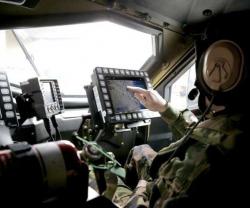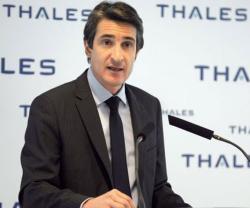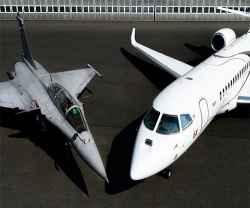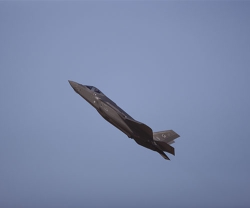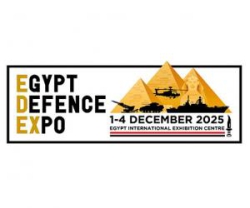EDA gives the go-ahead for new unmanned high-tech platform
14.07.2009 Europe
The European Defence Agency (EDA) has given a green light to an ambitious development project under the leadership of Rheinmetall Defence of Düsseldorf, Germany. The EDA has contracted with Rheinmetall Defence and three other companies (Diehl BGT Defence, ECA and Thales Optronique) to develop an unmanned vehicle platform and construct a demonstrator version that should show the potential of systems of this kind. In particular, the project seeks to demonstrate the future role that unmanned vehicles could play in protecting troops deployed in hazardous operations.
The EDA development contract is an important strategic coup for Rheinmetall, which has been placed in charge of this groundbreaking research and development project. In monetary terms, the order is worth some €4 million.
The Semi-Autonomous Unmanned Ground Vehicle System Demonstrator (SAMUGV), as it is tentatively known, will be a wheeled, all-terrain vehicle weighing between 300 and 400 kilos, roughly the size of a quad bike. Thanks to its built-in navigation system and sophisticated computer technology, it will be able to conduct a variety of missions by remote control as well as operating autonomously. The vehicle is to have a range of 400 kilometres, and be able to operate for periods of up to 24 hours.
As well as performing long-range patrolling and monitoring missions, the SAM-UGV will be able to carry out NBC reconnaissance operations in potentially contaminated terrain. The system’s suitability as a means of searching for improvised explosive devices will also be studied, responding to the acute threat these currently pose to forces deployed in global conflict zones. Besides a satellite-supported inertial navigation system, the vehicle will feature a 3D laser radar, a camera system and ultrasonic sensors, enabling it to cope with its surroundings and avoid obstacles.
Today, in an era of mounting cost pressure, creating a sophisticated system of this kind would be all but impossible for a single, company-financed research and development programme. To develop the SAM-UGV system, Rheinmetall Defence is pooling its knowledge and experience with the capabilities of three other defence contractors; this cooperative endeavour was brokered by the European Defence Agency, which also arranged financial backing. This project is thus a good example of the way the European defence industry is bundling its strengths – one of EDA’s prime objectives.
In terms of content, this development project is strongly oriented to current and future military scenarios involving significant operational risks such as out-of-area deployments of the German Bundeswehr, whose troops are now subject to continuous, low-intensity attack by insurgent elements. Be it in Afghanistan, Iraq or elsewhere, forces operating in crisis regions face an array of operational risks that are now as familiar as they are unpredictable: conflicts without clearly defined frontlines, where enemy combatants are generally difficult or impossible to identify, and whose callous, indiscriminate attacks often draw innocent civilians into the conflict.
Furthermore, nations taking part in international peacekeeping and peace enforcement missions are understandably eager to keep casualties as low as possible to avoid losing public support at home. One way of meeting this challenge is to use unmanned systems which operate autonomously and can perform a variety of missions, making sure that friendly personnel are not exposed to danger unnecessarily.
The EDA development contract is an important strategic coup for Rheinmetall, which has been placed in charge of this groundbreaking research and development project. In monetary terms, the order is worth some €4 million.
The Semi-Autonomous Unmanned Ground Vehicle System Demonstrator (SAMUGV), as it is tentatively known, will be a wheeled, all-terrain vehicle weighing between 300 and 400 kilos, roughly the size of a quad bike. Thanks to its built-in navigation system and sophisticated computer technology, it will be able to conduct a variety of missions by remote control as well as operating autonomously. The vehicle is to have a range of 400 kilometres, and be able to operate for periods of up to 24 hours.
As well as performing long-range patrolling and monitoring missions, the SAM-UGV will be able to carry out NBC reconnaissance operations in potentially contaminated terrain. The system’s suitability as a means of searching for improvised explosive devices will also be studied, responding to the acute threat these currently pose to forces deployed in global conflict zones. Besides a satellite-supported inertial navigation system, the vehicle will feature a 3D laser radar, a camera system and ultrasonic sensors, enabling it to cope with its surroundings and avoid obstacles.
Today, in an era of mounting cost pressure, creating a sophisticated system of this kind would be all but impossible for a single, company-financed research and development programme. To develop the SAM-UGV system, Rheinmetall Defence is pooling its knowledge and experience with the capabilities of three other defence contractors; this cooperative endeavour was brokered by the European Defence Agency, which also arranged financial backing. This project is thus a good example of the way the European defence industry is bundling its strengths – one of EDA’s prime objectives.
In terms of content, this development project is strongly oriented to current and future military scenarios involving significant operational risks such as out-of-area deployments of the German Bundeswehr, whose troops are now subject to continuous, low-intensity attack by insurgent elements. Be it in Afghanistan, Iraq or elsewhere, forces operating in crisis regions face an array of operational risks that are now as familiar as they are unpredictable: conflicts without clearly defined frontlines, where enemy combatants are generally difficult or impossible to identify, and whose callous, indiscriminate attacks often draw innocent civilians into the conflict.
Furthermore, nations taking part in international peacekeeping and peace enforcement missions are understandably eager to keep casualties as low as possible to avoid losing public support at home. One way of meeting this challenge is to use unmanned systems which operate autonomously and can perform a variety of missions, making sure that friendly personnel are not exposed to danger unnecessarily.
Previous PostBillion EURO-contract for PUMA IFV
Latest news
Latest events
Dubai International Air Chiefs’ Conference (DIACC 2025)
16 Nov 2025Atlantis, The Palm Dubai - United Arab EmiratesDubai Airshow
17 - 21 Nov 2025Dubai World Central (DWC) - United Arab EmiratesEgypt Defence Expo (EDEX)
01 - 04 Dec 2025Egypt International Exhibition Center New Cairo - EgyptDoha International Maritime Defence Exhibition & Conference (DIMDEX 2026)
19 - 22 Jan 2026Doha - Qatar



